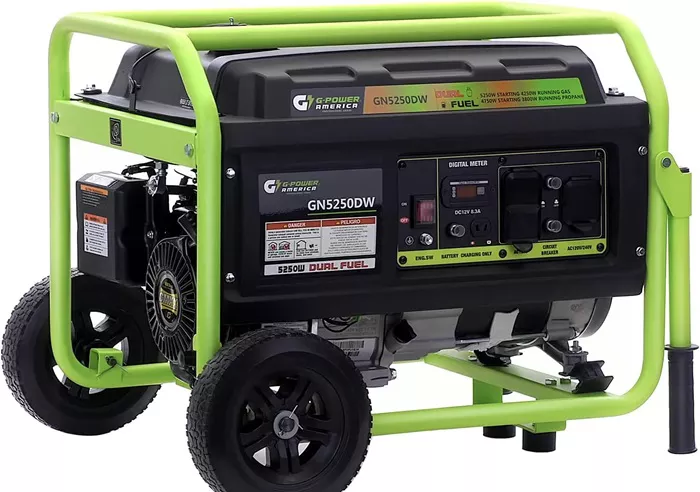Generators are invaluable during power outages, providing essential electricity to keep homes and businesses running. However, proper storage of a generator is crucial to ensure safety and maintain the equipment’s longevity. One common question among generator owners is whether it is safe to store a generator inside the house. This article explores the risks associated with indoor generator storage, safety precautions, and best practices for storing generators safely.
Risks of Storing a Generator Indoors
Carbon Monoxide Poisoning: Generators produce carbon monoxide (CO), a colorless, odorless gas that can be deadly if inhaled in large quantities. Even when not in use, residual fumes from the generator can pose a risk if stored indoors, especially in poorly ventilated areas.
Fire Hazards: Generators, particularly those powered by gasoline or diesel, pose a fire risk due to the flammable nature of the fuel. Storing a generator indoors increases the risk of accidental ignition, especially if it is near heat sources or flammable materials.
Fuel Spills and Leaks: Fuel spills and leaks can occur during storage, leading to hazardous situations. Indoor storage increases the risk of fuel vapors accumulating, which can be explosive and harmful to health.
Ventilation Issues: Proper ventilation is essential for safely storing a generator. Indoor spaces, especially basements and garages, may not provide adequate ventilation, leading to the buildup of harmful fumes.
Moisture and Corrosion: Storing a generator in a damp or humid environment can lead to corrosion and damage to electrical components. This can compromise the generator’s performance and safety.
Safety Precautions for Storing Generators
Outdoor Storage: The safest place to store a generator is outdoors, in a well-ventilated, dry, and secure location. Use a generator shed or enclosure designed to protect the generator from the elements while allowing proper ventilation.
Fuel Storage: Store fuel in approved containers and keep them in a separate, well-ventilated area away from the generator. Ensure fuel containers are tightly sealed to prevent leaks and vapor accumulation.
Ventilation: If you must store the generator indoors temporarily, ensure the area is well-ventilated. Open windows and doors to allow fresh air to circulate and prevent the buildup of harmful fumes.
Fire Safety: Keep the generator away from heat sources, open flames, and flammable materials. Install smoke detectors and fire extinguishers in the storage area for added safety.
Regular Maintenance: Regularly inspect and maintain your generator to ensure it is in good working condition. Check for fuel leaks, corrosion, and other potential issues that could compromise safety.
Security: Ensure the generator is stored in a secure location to prevent theft. Use locks, chains, or other security measures to protect your investment.
Best Practices for Generator Storage
Use a Generator Cover: Protect your generator from the elements by using a weatherproof cover. This helps prevent moisture ingress and corrosion while keeping the generator clean.
Elevate the Generator: Place the generator on a raised platform or pallet to keep it off the ground. This helps prevent water damage and reduces the risk of corrosion.
Disconnect the Battery: If your generator has a battery, disconnect it during storage to prevent drainage and potential damage. Store the battery in a cool, dry place and recharge it periodically.
Drain the Fuel: For long-term storage, consider draining the fuel from the generator to prevent stale fuel from clogging the engine. Use a fuel stabilizer if you choose to keep fuel in the tank.
Inspect Regularly: Periodically inspect the generator during storage to ensure it remains in good condition. Check for any signs of damage, leaks, or corrosion and address issues promptly.
Conclusion
Storing a generator indoors poses significant risks, including carbon monoxide poisoning, fire hazards, and fuel spills. To ensure safety and maintain the generator’s performance, it is best to store the generator outdoors in a well-ventilated, dry, and secure location. Use a generator shed or enclosure to protect the equipment from the elements while allowing proper ventilation.
By following safety precautions and best practices for generator storage, you can minimize risks and ensure the longevity of your generator. Proper storage not only protects your investment but also ensures that your generator is ready to provide reliable power when you need it most. Always prioritize safety to prevent accidents and ensure the well-being of your household.

